Coffee Manor introduction: what's the difference between the three Hope Manors in El Salvador and Colombia?
For professional baristas, please follow the coffee workshop (Wechat official account cafe_style)
The Hope Manor of Guatamala, Panama and Mexico was introduced last time. There are also a lot of farmland called Hope in El Salvador. This time we will take a look at the Hope Manor of the Maga ñ an and Pacas families. The other is the Colombian Caf é Granja La Esperanza, which is known by many people.

1) Hope Manor of Maga ñ a Men é ndez Cafe in El Salvador
Owners Mr. Gustavo Maga ñ an and Enrique Maga ñ a-El Salvador.
The estate is located in Apaneca, El Salvador, west of El Salvador. Apaneca in Navat means river in the wind, meaning that it belongs to high terrain and has a cool breeze.
Located in the mountains of Apaneca-Llamatepec, the manor is another biosphere inhabited by a variety of organisms. There are four active volcanoes in the area, of which Santa Anna, which erupted in 2005, belongs to fertile volcanic soil.
La Esperanza is one of their estates. Others include Finca Las Pampas, Finca Las Victorias, Finca Las Violetas, Finca Piemonte, Finca Juan, Finca Buenos Aires, Fina Florida and Finca San Ramon.
Finca La Esperanza is the first manor they bought in the 1800s, and most of the "La Esperanza" bought on the market are SHG and HG from the farmland.
Hope Manor is located at a high altitude of 1300-1400 meters and is certified by the Rainforest Alliance (Rainforest Alliance Certified).
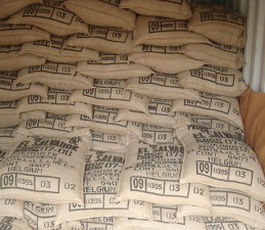
Magaña Menéndez Coffee House Other estates
★Finca Buenos Aires
The estate is located in Laguna de Las Ranas, Juayúa, Sonsonate, west of Salvador. Located next to Santa Ana Volcano, the soil is sandy loam. This soil has good drainage capacity and is very suitable for planting.

Sandy loam includes sand (sand), loess (slit), and clay (clay).
The manor is located at a high altitude of 1530-1700 meters. Due to the high clouds and fog in this area, the coffee beans produced are larger and have higher acidity.
Area: 112ha, of which 65% is used for planting Bourbon,35% for forest conservation.
★ Finca Florida
The estate is located in the province of Santa Ana (Santa Ana) around Mount Chingo (El Chingo) in Chalchuapa, northwest of El Salvador.
The manor is located at a high altitude of 850-1100 meters. Because there are more rocks in this area, it belongs to volcanic soil and has more shade trees, which makes the soil more humid.
Area: 104ha, of which 85% is used to grow Sarchimore, Catimore, Caturra and Catuai,15% for natural mountains and lava.
★ Finca Las Pampas
The estate was bought by the Maga ñ a Menn é ndez family in the 1900s and is located in the Apaneca mountains in western El Salvador.
The manor is located at a high altitude of 1300-1400 meters, belonging to volcanic soil and fertile soil.
Area: 60 hectares, of which 92% is used for planting Bourbon and red Caturra,8% is a natural mountain range.
★ Finca Las Victorias
The estate was bought by the Maga ñ a Menn é ndez family in the late 1800s and is located in the Apaneca mountains in western El Salvador.
The manor is located at a high altitude of 1400 meters, belonging to volcanic soil and fertile soil.
Area: 55 hectares, 100% for growing Bourbon, Bourbon Salmon Catimore and Catuai.
★ Finca Las Violetas
The estate was bought by the Maga ñ a Menn é ndez family in the late 1800s and is located in the Apaneca mountains in western El Salvador.
The manor is located at a high altitude of 1420 meters because of the fertile soil in this area.
Area: 20 hectares, of which 90% are used for planting Bourbon and Catuai,10% for residential use.
★ Finca Piemonte
The estate is located in Laguna las Ninfas, Apaneca, west of El Salvador. At a high altitude of 1420 meters, the coffee beans produced are larger and more acidic. -
Area: 52 hectares, 100% for growing Bourbon.
★ Finca San Juan
The estate is located in Concepcion de n de Ataco, in the province of Avachapan (Ahuachap á n), in the west of El Salvador. When the coffee field is renovated every year, there is a warm need for a nursery to temporarily place coffee seedlings.
The manor is located at a high altitude of 1100-1200 meters.
Area: 52 hectares, 100% for growing Bourbon, red Caturra, yellow Caturra and Catuai.
★ Finca San Ram ó n
The estate is located in Laguna las Ninfas, Apaneca, west of El Salvador.
There is Beneficio San Ram ó n, the coffee processing plant of the Maga ñ a Menn é ndez family, which handles coffee beans from all the family's farmland. Treatment method: washing, and drying method is full sun and first use the dryer and then the sun (Raised Bed).
The manor is located at a high altitude of 1000-1260 meters.
Area: 150ha, 95% is used for planting Bourbon.
2) Manor of Hope in Maria and Alfredo Pacas, El Salvador

At present, the owner is Maria and Alfredo Pacas.
This Hope Manor is one of the estates of the Pacas family. It is also in the mountains of Apaneca-Llamatepec. At a high altitude of 1000-1600 meters, the highest field is called La Clima.
In the 1800s, when Jose Rosa Pacas, bought the farmland and planted Bourbon varieties. In the 1900s, posterity Fernando Alberto Pacas Figueroa studied different planting methods and cultivated different varieties including: Maragojipe, San Ram ó n Bourbon. Later, it was found that one variety was different from bourbon, which was confirmed and named after pacas. As the planting methods become more and more mature, the production of coffee increases. It was not until the age of Fernando Alfredo Pacas Diaz that they began to process and export their own coffee beans. The current leader is the fifth generation brother and sister Maria and Alfredo Pacas Diaz, who make good use of a variety of traditional methods, including mixed AGOVIO PARA scaffolding, properly shaded farmland, old tree species, and soil management.
This manor is dominated by Bourbon, and others are red, orange, yellow Bourbon, Pacamaras, Typicas, and Pacas, which is named after itself.
Shade trees are Igna, Eucalyptus, cedar and so on.
The characteristics of Pacas coffee bean varieties are
1) the branches of the tree are relatively close.
2) less pruning is needed.
3) be able to grow without shade and at different elevations (but not more than 1500m, because maturity is slow)
4) it is more resistant to pests, especially to the roots.
5) able to withstand strong winds
6) Coffee beans are relatively large
In addition to working on farming, the PACAS family has also promoted the development of the community, sponsoring two local schools to keep the next generation away from violence or crime. In addition, it has also promoted a coffee certification scheme to make more locals more aware of the process of coffee from growing to buying and selling.
Treatment methods: washing, tanning, honey treatment, they have their own treatment plant-Pacas Family Mill Vivagua (both washing and drying methods).
Drying method: Natural Sun Dried, Patio Dried, Raised Bed
Area: about 88 hectares, of which 9 hectares are used for rainforest conservation and endangered plants.
3) Colombian Hope Manor Caf é Granja La Esperanza

Cafe Granja La Esperanza is made up of six farmland in El Valle del Cauca and Cundinamarca under the Herrera family, owned by Rigoberto Herrera.
Farmland in Colombia includes La Esperanza, Cerro Azul, Potosi and Las Margaritas, Hawaii, covering eight microclimate zones.
La Esperanza, Cerro Azul, Potosi and Las Margaritas are all located in Trujillo. Valle del Cauca is the province of western Colombia. The province faces the Pacific Ocean.
Trujillo is in the mountains to the east, which has relatively flat terrain and is also located to the west of the Cauca River, ranging from 1000 to 3000 meters above sea level. The warm climate of the valley meets the cold air of the Pacific Ocean, making the average temperature and rainfall suitable for coffee growth.
The soil suitable for planting in this area contains volcanic ash and organic matter, but the phosphorus quality in this area is generally low, so Caf é Granja La Esperanza also prepares its own natural fertilizers to ensure the health of coffee trees and the quality of coffee beans.
Interestingly, there is a coffee tree called Laurina (BOURBON species) grown in Granja La Esperanza. Its fruit is naturally decaffeinated, but it produces less because the fruit is more fragile than the average coffee fruit.
There are Caturra, Geisha, Moka,Bourbon (including red, yellow and Tekizik), Laurina, Pacamara, San Bernardo and Pache in La Esperanza garden.
Height comparison:
La esperanza:1400-1700 m
Cerro Azul:1700-2000 m
Potosi:1400-2000 m
Las Margaritas:1400-1800 m
Area comparison:
La esperanza:34
Cerro Azul:18 ha
Potosi:52 ha
Las Margaritas:34 ha
Geisha short story of Caf é Granja La Esperanza:
The La Cardeida estate in Boquete, Panama, Panama, which the Herrera family rented in 2005, is next to La Esmeralda, which is famous for its Geisha. At first, the botanist Hernando Tapasco helped to plant the Geisha variety, and at the beginning, the breeding team spent two years in Panama to learn the characteristics of geisha. Successful in "The Best of Panama" in 2008, La Cardeida's Geisha won the championship. In 2012, Coffee of the year at SCAA won second, third and seventh places for washing Geisha under Cerro Azul,Las Magaritas and Buenos Aires, respectively.
Geisha varieties are also grown in La Esperanza, including rare organic certified varieties (Geisha organica). All fruits are harvested by hand, and workers harvest them more frequently than usual to ensure their quality.
Other manor features:
☁ Cerro azul
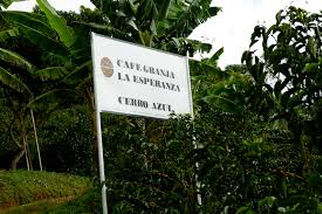
Next to the La Esperanza, the terrain is relatively high. although there is strong sunshine, there are clouds at sunset and sunrise, reducing moisture evaporation and cooling effect. The location of the valley converts the Pacific sea breeze into cloudy clouds, coupled with volcanic soil and sufficient Rain Water, which is very suitable for Geisha growth. Although about seven varieties and about 45000 Geisha have been planted here, the naming is so strict that only 5000 to 7000 of them can show the characteristics of Cerro azul. What can be called AAA reserve is two of the seven varieties, and if they grow at an altitude of 1800-2000 meters.
The coffee is washed with full water, which includes 16 hours of fermentation, then the water is removed in the dryer and the sun is used for raised bed drying. The harvesters here must undergo five months of training.
☁ Las Magaritas

A little further than Cerro Azul, in the mountains of central Colombia, part of the Andes. The soil, height and weather are the best, so there are many rare species here, such as Pacamara, Red Bourbon, Yellow Bourbon, Tekisic, Mokka. In addition to Geisha, there is also a kind called Sudan Rume, which has bronze leaves. This kind of tree can resist the diseases of many coffee trees and is mostly used for mixed scaffolding. It is said that the cup test is not inferior to Geisha, but the growth is not as stable as Geisha, so it has not been propagated in large numbers.
Las Margaritas's Geisha needs to be fermented for 14 hours and washed in full sunlight. Due to the humid climate here, there are few other beans that are completely dependent on the sun.
Let's compare the appearance of Geisha, Sudan Rume and Laurina coffee seedlings.
(photo source: Cafe Imports)
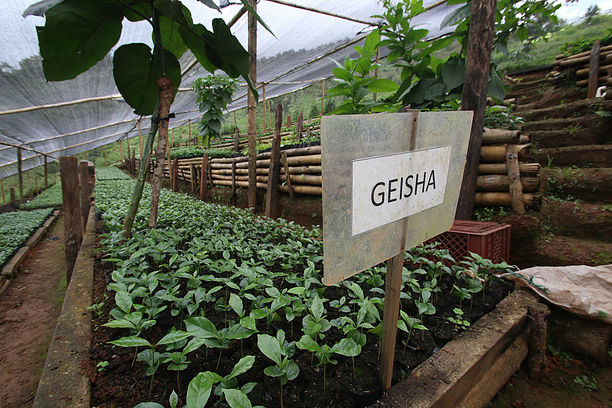
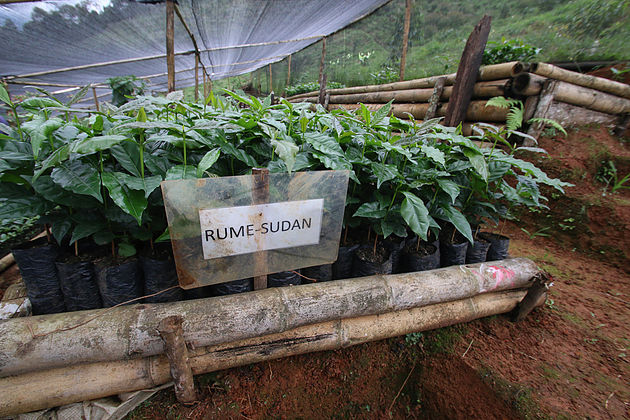
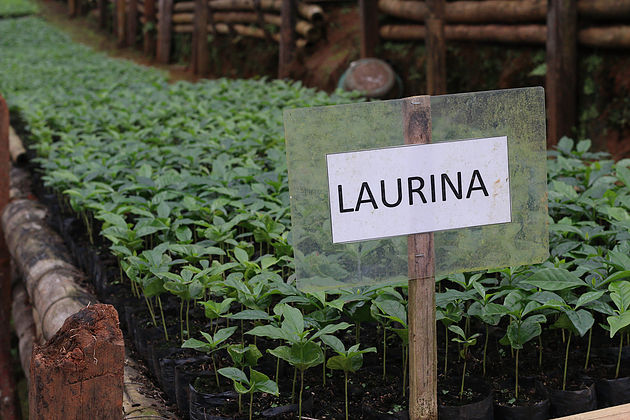
☁ Potosi
Farmland and Las Magaritas face. It has been planted since the time of Rigoberto Herrera's great-grandfather, so the varieties are mainly Colombian variety and caturra.
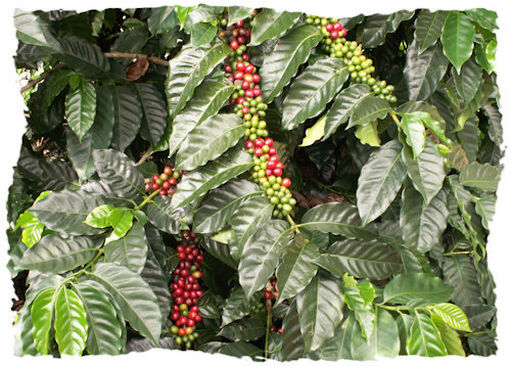
Caturra coffee tree
Apart from attaching importance to the quality of coffee, the manor also pays attention to environmental protection and staff welfare, and has implemented different ways to improve talents, optimize the environment and productivity.
Important Notice :
前街咖啡 FrontStreet Coffee has moved to new addredd:
FrontStreet Coffee Address: 315,Donghua East Road,GuangZhou
Tel:020 38364473
- Prev
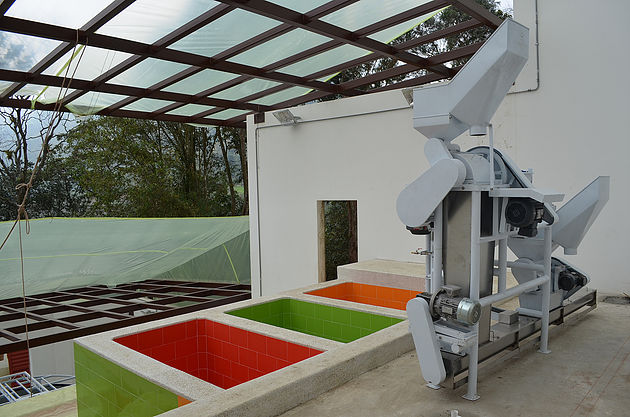
Introduction to the treatment methods of the three best coffee farms in Colombia
Professional baristas please follow the coffee workshop (Wechat official account cafe_style) this time it is about three Colombian coffee farms. The first La Palma y El Tcan is attracted by their fermentation methods, and the other Finca Santuario is because the author recently bought their love elixir, so I want to know more. The third is Finca Santuario's sister.
- Next
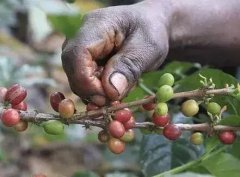
Coffee Trading system in Ethiopia | ECX Trading system
Professional barista exchanges please pay attention to the coffee workshop (Wechat official account cafe_style) Ethiopia ECX trading system is the savior of Ethiopian commercial bean farmers, but for the third wave of boutique coffee, traceability is a headache. Let's get to know the ecx trading system that is very important to Ethiopia's producing areas. Ethiopia's infrastructure is underdeveloped.
Related
- Does Rose Summer choose Blue, Green or Red? Detailed explanation of Rose Summer Coffee plots and Classification in Panamanian Jade Manor
- What is the difference between the origin, producing area, processing plant, cooperative and manor of coffee beans?
- How fine does the espresso powder fit? how to grind the espresso?
- Sca coffee roasting degree color card coffee roasting degree 8 roasting color values what do you mean?
- The practice of lattes: how to make lattes at home
- Introduction to Indonesian Fine Coffee beans-- Java Coffee producing area of Indonesian Arabica Coffee
- How much will the flavor of light and medium roasted rose summer be expressed? What baking level is rose summer suitable for?
- Introduction to the characteristics of washing, sun-drying or wet-planing coffee commonly used in Mantenin, Indonesia
- Price characteristics of Arabica Coffee Bean Starbucks introduction to Manning Coffee Bean Taste producing area Variety Manor
- What is the authentic Yega flavor? What are the flavor characteristics of the really excellent Yejasuffi coffee beans?

